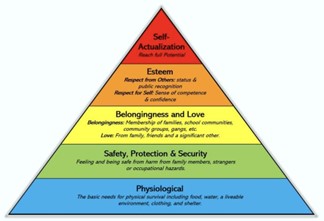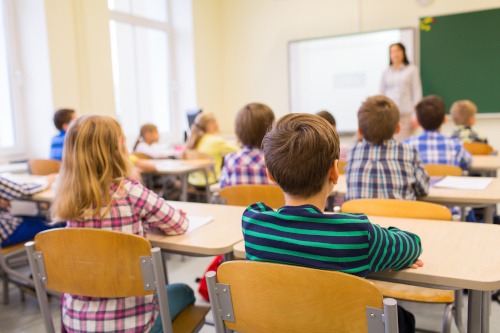The other day, my friend’s high school daughter complained, “It’s not fair!” “What’s not fair?” her mother asked. “Everyone is cheating!” her daughter replied. “They started doing it during COVID, and now it’s a habit.” Unfortunately, academic dishonesty is just one example of the many negative consequences of the COVID pandemic.
In hindsight, we have ample evidence that remote learning during COVID increased hardships for PK-12 students, both academically and non-academically. Some students lacked necessary resources. In one study, even after all students were provided with a laptop computer, internet access, and headphones, low-income students’ school attendance and engagement were consistently less frequent than their higher-income peers (An, 2021). Food insecurity also increased during COVID, partly due to the hiatus of school breakfast, lunch, and take-home snack pack programs (Parekh et al., 2021). And worst of all, children at home during COVID were twice as likely to experience physical abuse and three times likely to experience emotional abuse during the pandemic than in prior years (Park & Walsh, 2022).
Without a doubt, remote learning during COVID was distressing for students, with 71 percent of parents in one study reporting that the pandemic had “taken a toll on their child’s mental health” (Abramson, 2022, para. 2).
It was a stressful time for teachers, too. One study found that teachers experienced higher burnout rates, depression, and anxiety as a result of the rapid transition to remote learning and its extended duration, which led to feelings of isolation, lower work commitment, and higher teacher turnover (Gutentag & Asterhan, 2022).
All of these factors contributed to a substantial decline in student learning during COVID. One year into the pandemic, Kwakye and Kibort-Crocker (2021) reported that 23 percent of low-income students received a failing grade during the pandemic compared to 8 percent of average- and high-income students. After two years, federal achievement data revealed significant drops in third-grade students’ overall math and reading scores across the United States (Camera, 2022).
So now, we’re all back at school, but things have changed. In addition to lingering fears of COVID, the national trend toward disrespect for authority has increased student discipline issues, and the rash of school shootings in recent years has rendered school safety a huge concern (Kurtz, 2022; Oshin, 2022).
Moreover, controversial curricular reform efforts in social studies, science, and health have exacerbated the re-opening of schools, with community feelings of distrust, protests at school board meetings, and parents pulling children from public schools in favor of private and home school options (Sparks, 2022).
Related:
4 tips to build a strong classroom culture this year
7 educators share back-to-school action plans
In response, today’s school leaders have no choice but to view post-COVID as an opportunity for schools to redouble their efforts to support students. Maslow’s Hierarchy of Needs, a pyramid-shaped model that represents human motivation from a student’s most basic needs (the base of the pyramid) to their greatest potential (the pyramid’s peak), offers a useful framework (Wahome, 2022) (see Figure 1).
Figure 1
Maslow’s Hierarchy of Needs

Physiological Needs. First and foremost, post-COVID schools must work harder than ever to ensure that all students have the resources and support they need. Community resources, private donations, and grants can be sought to supplement school funding for things like laptops, software, and hot spots. Non-perishable food drives, fresh produce markets, and the availability of personal hygiene products for students who need them can be organized by parent clubs or community groups. Social and public health services such as counseling, parent education, dental exams, and flu shots can be provided on-site (Office of Elementary and Secondary Education, 2022).
Safety, Protection, and Security. Ensuring students’ physical and emotional safety runs a close second. Post-COVID schools must do all they can to protect students from harm and hostility, both in-person and in cyberspace. School security systems, school resource officers, background checks, and other safety measures must take top priority. School facilities must be free of toxins and hazards, student behavior policies must hold students to high standards, and school staff members and volunteers should receive annual training as mandated reporters of child abuse and neglect as well as sex-based discrimination and harassment.
Belongingness and Love. Today’s schools also must go out of their way to facilitate students’ feelings of belongingness. School colors, mascots, and participation in extracurricular activities provide a starting point, but more than ever before, post-COVID students need opportunities to communicate, collaborate, and problem solve with their peers. Additionally, advisor-advisee programs built into the school day can foster close relationships between advisors and small groups of students (AMLE, 2022). Parent and community volunteers can be recruited to assist with homework and tutoring. Partnerships with local churches and other civic groups can provide students with positive role models, mentors, and social-emotional support.
Esteem. Only after students’ physiological, safety, and belonging needs are met should schools begin thinking about teaching and learning. Post-COVID is a grand opportunity to re-think the traditional academic structure of schools. Today’s students would benefit from smaller class sizes, two teachers per classroom, and extended instructional time for reading, math, and writing instruction. Today’s students no longer need to memorize information; they need to understand concepts. Students no longer need to learn isolated facts; they need to practice the skills needed to apply them. Re-thinking what, why, and how students are taught is what teachers and school leaders do best; and in today’s post-COVID world, doing things differently is essential.
Self-Actualization. Once students reach the peak of the Maslow’s Hierarchy pyramid, they are finally in a position to blossom and thrive. But only with a solid foundation of support and resources beneath them can students achieve their full potential. To help students get there, today’s school leaders must work to develop a post-COVID vision for teaching and learning that not only supports students academically but also addresses students’ non-academic and social-emotional needs. Once that happens, my friend’s conversation with her high school daughter might sound something like this: “It’s not fair!” “What’s not fair?” “Everyone is working so hard! They started doing it following COVID, and now it’s a habit!”
- 4 ways to encourage play in education - April 25, 2024
- CoSN IT Leader Spotlight: Lisa Higgins - April 25, 2024
- It’s time to pay student teachers - April 25, 2024

